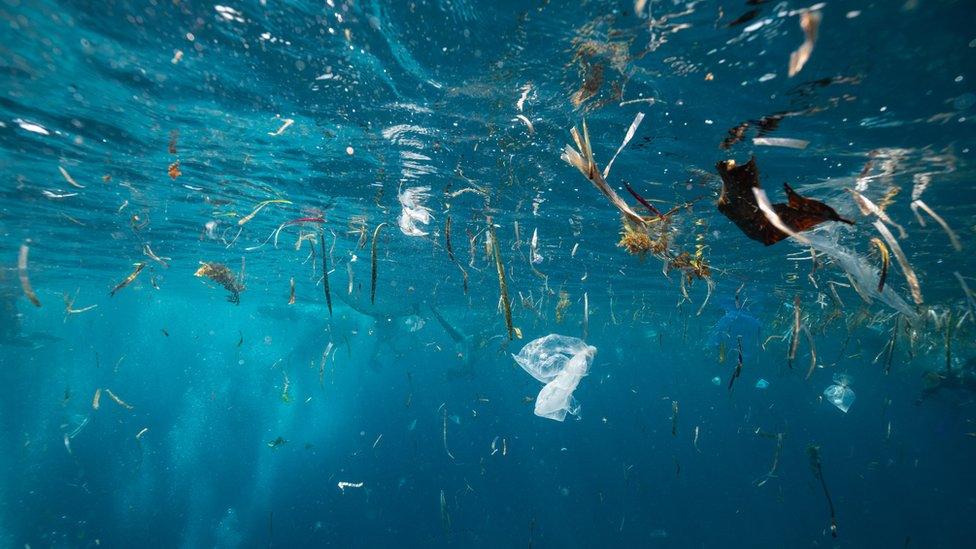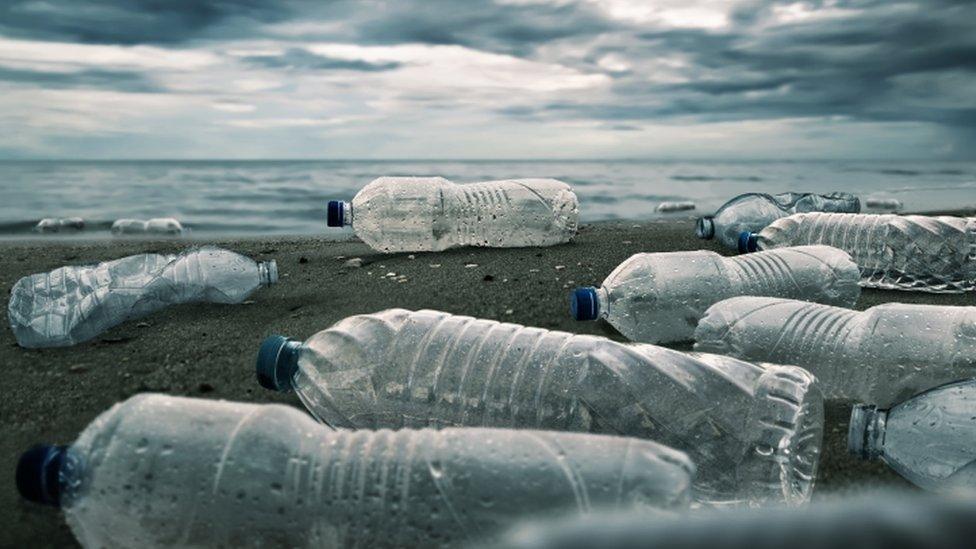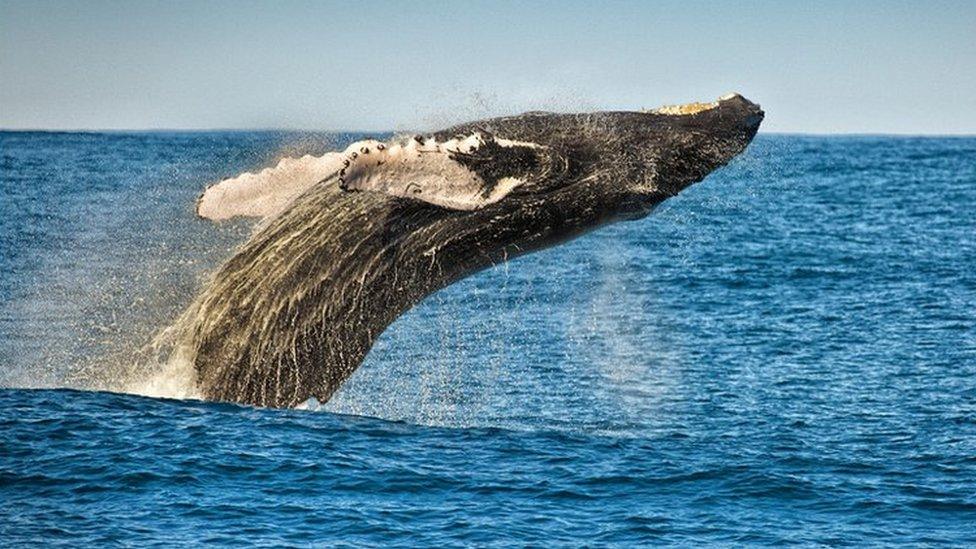There could be 200 million tonnes of plastic in the Atlantic, according to new research
- Published
- comments

There could be more than 10 times the amount of plastic in the Atlantic Ocean than first thought, according to a new study.
The levels of plastic in our oceans have been "massively underestimated", say the scientists who carried out the research.
Their study focused on three different plastics: polyethylene, polypropylene and polystyrene. These are the most commonly used to make objects like single use bottles and plastic bags and they're also what most plastics that end up as litter are made out of.
The researchers collected seawater samples from the Atlantic during an expedition back in 2016.
They filtered large volumes of water at three different depths in the top 200 metres of the ocean and identified microplastics in these samples using state-of-the-art spectroscopic imaging techniques.
Their findings revealed that there are between 12 and 21 million tonnes of microplastics in the upper waters of the Atlantic Ocean.
However, it's only the three most common types of plastic which are represented in this figure.

Researchers measured levels of three of the most common plastics used to make objects like plastic bottles
Also, the volumes of water used as samples in the study were limited. The scientists believe if they take the figures from their research and apply this to the full depth of water in the Atlantic Ocean which is around 3000 metres, then this suggests the ocean is actually carrying about 200 million tonnes of plastic litter.
"This is much more than is thought to have been supplied," said professor Richard Lampitt from the National Oceanography Centre (NOC).
According to previous estimates, the amount of microplastics to have entered the Atlantic over the last 65 years stands at around 17 million tonnes altogether. However, earlier studies hadn't measured the levels of "invisible" microplastic particles below the ocean's surface.
Guide: Why is plastic a problem?
"Our research is the first to have done this across the entire Atlantic, from the UK to the Falklands," said Katsiaryna Pabortsava from the NOC who took part in the study.
Professor Lampitt said: "In order to determine the dangers of plastic contamination to the environment and to humans we need good estimates of the amount and characteristics of this material, how it enters the ocean, how it degrades and then how toxic it is at these concentrations.
"...scientists have had a totally inadequate understanding of even the simplest of these factors, how much is there, and it would seem our estimates of how much is dumped into the ocean has been massively underestimated."
- Published2 January 2020

- Published13 June 2024

- Published2 April 2020

